Commentary
How to stoke an epidemic
Prevalence, Infectivity and Contact Rate are being ignored
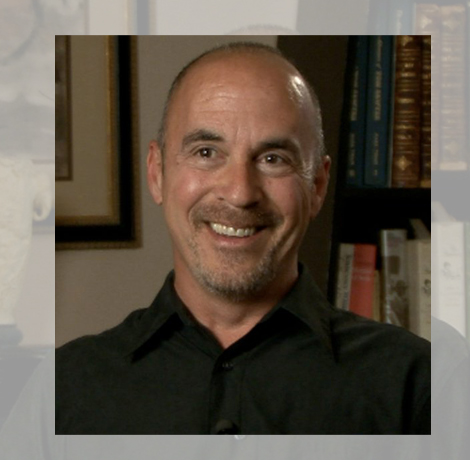
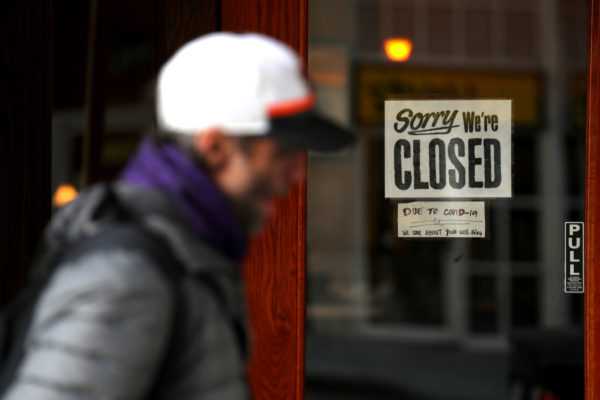
A pedestrian walks by a closed sign on the door of a restaurant on March 17, 2020 in San Francisco (Photo by Justin Sullivan/Getty Images)

Gabriel Rotello.
As we watch the disastrous results of reopening and the surge in new infections, I keep thinking that we’re running a giant epidemiological experiment designed to illustrate how to make an epidemic as catastrophic as possible.
In an epidemiological nutshell, the resurgence is happening because we are largely ignoring the three fundamental factors that determine whether an epidemic grows or shrinks, namely Prevalence, Infectivity and Contact Rate. If you really want to bring an infectious epidemic like Covid-19 under control, you better try to address all three.
Prevalence
Prevalence is the percentage of the population that is infectious at any given time.
It’s important because, other things being equal, you will have a lot more transmission in a population where 1 in 10 people are infectious than in a population where only 1 in 10,000 are. The reason why epidemics always begin slowly is because at the beginning of all epidemics, prevalence is inevitably low. As more people get infected, increasing prevalence becomes like a snowball rolling downhill.
Infectivity
Infectivity is the statistical likelihood that a particular pathogen will actually be transmitted when an infectious person and a susceptible person come together.
Different diseases have different levels of infectivity. For example, the infectivity of measles and smallpox is incredibly high while the infectivity of most sexually transmitted diseases (like HIV) is so low you have to exchange significant bodily fluids to achieve transmission. Covid-19 is relatively high, though not as high as measles. Infectivity is obviously important because the more infective a pathogen, the easier and faster it will spread.
Contact Rate
Contact Rate is the rate at which infectious people come into contact with susceptible people in a given population.
It’s essentially the river upon which human-to-human disease transmission flows. The reason for its importance is pretty self-evident.
In a crowded city where people might come into contact with thousands in a single day, diseases have much more opportunity to spread than in a rural area where people might only come into contact with a handful of others.
Because Prevalence, Infectivity and Contact Rate are so important, they form the basis for the three main strategies we use to try to combat epidemics.
The main way to address prevalence (short of a cure or a permanent lockdown) is through testing, contact tracing and quarantine.
The purpose of these prevalence-based strategies is to find infectious people and temporarily remove them from the population, thereby reducing prevalence within that population.

The main ways to address infectivity (at least for respiratory diseases like Covid-19) are by wearing masks, washing hands, staying six feet apart, meeting outdoors rather than indoors, and so on. The idea behind these infectivity-based strategies is to reduce the chance of transmission when infectious people and susceptible people do come together.
This, by the way, is also the idea behind condoms to prevent HIV transmission, and also the more recent strategies for HIV prevention like PrEP, PEP and Treatment as Prevention.
All of these are ways to reduce infectivity per contact.
And finally, we reduce the contact rate itself by keeping potentially infectious and susceptible people apart. That’s why we had the shut-down. Contact rate is so critical that in the case of Covid-19, governments all over the world decided it was worth trashing their economies to bring the contact rate down.
It’s a blunt and painful instrument, but it’s vital if things are spiraling out of control.
So what does all this have to do with the big reopening disaster that’s happening now?
Think of it this way. By re-opening, we are not directly addressing or changing prevalence or infectivity. What we’re doing is increasing the contact rate.
Now you might think that this would automatically increase transmission, but not necessarily, at least if you do it right. That’s because prevalence, infectivity and contact rate work together synergistically, kind of like a seesaw. If one of these factors increases but the other two decrease, things might balance out and you might have a chance of keeping transmission from spiraling out of control.
For example, imagine that you increase the contact rate by reopening the economy. But at the same time, you reduce prevalence by aggressively testing and isolating infective people. And you also reduce infectivity by making sure everyone wears masks, observes the six-feet rule, gathers outdoors rather than indoors and so on.
In that case, the decreases in both prevalence and infectivity might balance the increase in the contact rate and you might avoid a resurgence.
True, it’s hard to balance this seesaw, in part because contact rate is such an important factor. But it’s possible.
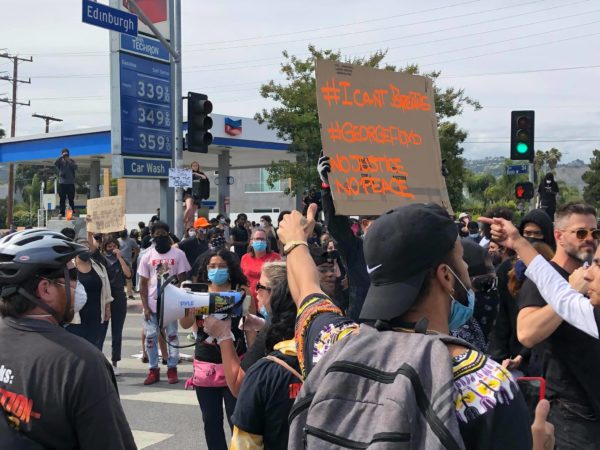
Protestors along 3rd Street allegedly set a police cruiser ablaze as thousands take to the streets near The Grove in Los Angeles. (Photo by Troy Masters)
And, in fact, it looks like that may be why the recent protests following the murder of George Floyd didn’t turn into engines of infection in most places. The protests amounted to a sudden, drastic – but very temporary – increase in the contact rate for those who participated.
But in many places the protests followed months in which strict isolation had driven prevalence down to very low levels.
They also occurred outdoors rather than indoors, and most participants wore masks, both of which would powerfully reduce infectivity. Under those circumstances, the reductions in both prevalence and infectivity may have balanced the sudden, very temporary surge in the contact rate, and we avoided major transmission events.
But unfortunately, that’s not what’s happening with the reopening in general.
Under our current leadership vacuum, we are deliberately engaging in a long-term increase in the contact rate while making virtually no attempt to tamp down prevalence or decrease infectivity to balance things out.
In the absence of a cure or an endless lockdown, prevalence is reduced when you test, contact trace and isolate infectious people. But while testing has increased, there are no nationwide or even statewide programs to isolate infectious people, which is the main benefit of testing. In some countries that have kept transmissions low, people who test positive are required to isolate at home.
Not urged to, required to.
They are constantly called and visited and otherwise monitored by public health workers, provided with food, medicine and other services, and repeatedly re-tested until they clear the virus.
Countries like China go even further.
People who test positive are sent to so-called ‘fever clinics’ and are required to stay there until they test negative, usually about two weeks. Some countries do a combination. If you live alone, they require you to isolate at home. If you live with others whom you might infect, they send you to isolation clinics.
Testing alone doesn’t do much unless you provide a safe, comfortable, humane and cost-free way to briefly isolate the infectious. But we’re not doing that.
As a result, we’re not addressing prevalence at all.
And when it comes to infectivity, reckless politicians are actually encouraging people to abandon masks, ignore social distancing, gather indoors, etc.
Under these circumstances, what’s happening with the reopening is this. We are increasing the contact rate significantly by reopening, but we’re doing nothing to tamp down prevalence and we’re actually increasing infectivity.
This is virtually a textbook definition of how you stoke an epidemic.
All this being true, I’m not particularly optimistic about the future even in places like New York, New Jersey and Connecticut that seem to be doing well at the moment. The tri-state region is almost certainly doing well because the lockdown and social distancing were extremely strict, which reduced prevalence to very low levels. But as the region reopens without a way to quickly identify pockets of infection and isolate the infectious, and without mandatory adherence to masks and other methods of reducing infectivity, transmission will eventually go back up. It’s just going to take a bit longer.
The good news is that epidemiologists know what we need to do to bring transmission under control. These principles have been well understood for over 100 years. And in places like Singapore, Hong Kong, South Korea, Vietnam, New Zealand, even China itself, where the virus has been largely eradicated, success has come by addressing all three factors of Prevalence, Infectivity and Contact Rate.
The results have been impressive. Life has returned to a semblance of normal and the inevitable minor outbreaks are quickly identified and stamped out.
The question is, do Americans have the ability – or the will – to do that here?
And do leaders even understand what we need to do?
For example, I keep hearing well-meaning politicians talking about the importance of testing, which is fine. But I almost never hear them go on to stress the importance of isolation, which is the main point of testing.
In the end, without a clear understanding of how epidemics work, we exist at their mercy.
And as humanity has learned repeatedly since time began, epidemics have no mercy at all.
— Gabriel Rotello is author of the 1997 book, “Sexual Ecology: AIDS and the destiny of gay men,” a book about the epidemiology of HIV and co-founder of OutWeek Magazine. He is currently a television writer, producer and director living in Los Angeles.
COMMENTARY
Why Rob Reiner’s murder hit this old lesbian hippie so hard
Addiction kills. Journalist Karen Ocamb dives into mental health and addiction themes to explore coping with Rob Reiner’s murder.
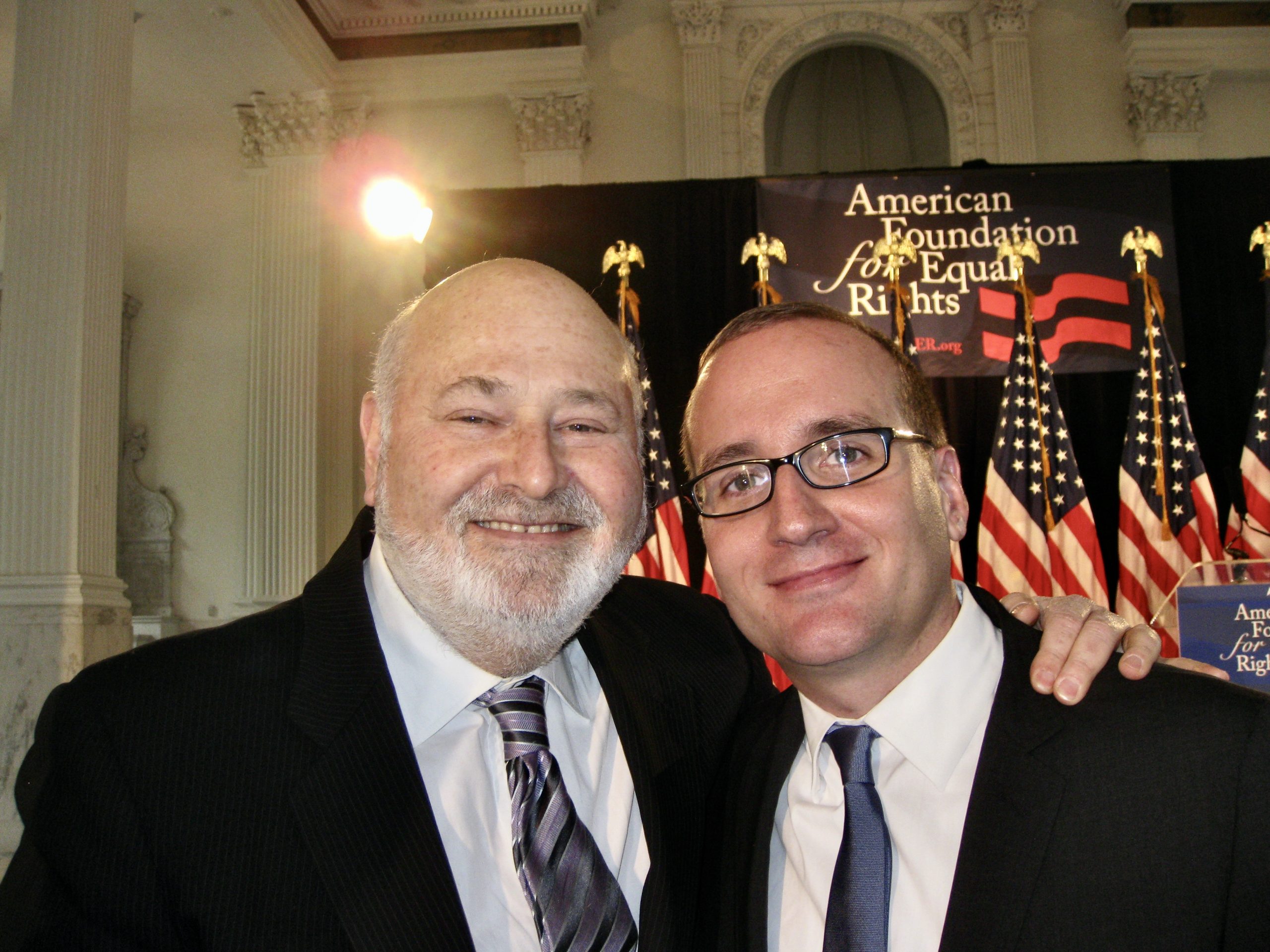
Rob Reiner was an anomaly in Hollywood: the unabashedly Democratic liberal “good guy” who honestly wanted to dialogue and passionately debate issues such as marriage equality with Republican conservatives as a way of advancing democracy and seeking a more perfect union.
“I’ve always said, ‘You cannot have a healthy democracy unless you have a healthy Republican Party and a healthy Democratic Party so that we can actually debate the ideas of where we are,’” Reiner told Republican political commentator Margaret Hoover, host of PBS’s Firing Line With Margaret Hoover, in a tribute rebroadcast of a show recorded April 2019. “I mean, we are a…capitalist nation, but we also have a lot of socialist programs inside the capitalist nation, and we have to find a way to balance those things. And the only way to do that is to have two parties arguing with a common set of facts.”
Reiner talked about how he befriended many Republicans after Republican legal icon Ted Olson shared his deep belief that marriage is an individual freedom and therefore a fundamental right for lesbian and gay individuals. He reminded Hoover, a longtime LGBTQ+ ally, that they first met at the federal district court in San Francisco for the hearing over California’s anti-gay Prop 8. She excitedly reminded him that they sat together.
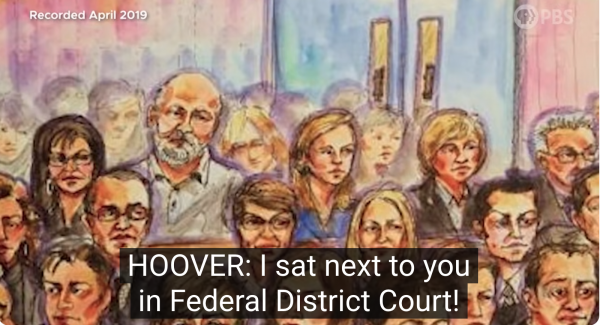
Hoover actually served on the Advisory Council for the American Foundation for Equal Rights (AFER), the organization Reiner created with longtime gay friend and fellow progressive advocate Chad Griffin and Griffin’s business partner Kristina Schake. The idea for the federal challenge to Prop 8, which passed with 52 percent of the vote in 2008, started formulating soon thereafter during a lunch with the three and Michele Reiner at the Polo Lounge in the Beverly Hills Hotel. Later, an acquaintance suggested they contact Ted Olson, who supported marriage equality. Reiner shared his excitement when Democratic stalwart David Boies, Olson’s opponent in the infamous 2000 Bush v Gore case, joined the federal case, effectively taking politics out of the argument. (Read New York Times investigative reporter Jo Becker’s book Forcing the Spring: Inside the Fight for Marriage Equality for an engrossing behind-the-scenes look.)

Watching Hoover and Reiner spar, laugh, and exchange stories is a horrific reminder of what we’ve lost. Who else could head up a Truth and Reconciliation Commission after Donald Trump and his acolytes have left the scene?
The sudden brutal stabbings of Rob Reiner and his beloved wife Michele in the bedroom of their Brentwood home in the early morning hours of Sunday, Dec. 14, allegedly at the hands of their drug addicted, mentally ill son Nick, hit many of us personally. Through his acting, writing, and incredible films, or through his work on progressive issues, we felt we knew Rob Reiner. And our hearts break for their immediate and extended family.
“Words cannot even begin to describe the unimaginable pain we are experiencing every moment of the day,” Romy Reiner, 27, and Jake Reiner, 34, said in a statement Wednesday. “The horrific and devastating loss of our parents, Rob and Michele Reiner, is something that no one should ever experience. They weren’t just our parents; they were our best friends.”
The siblings requested respect. “We are grateful for the outpouring of condolences, kindness, and support we have received not only from family and friends but people from all walks of life. We now ask for respect and privacy, for speculation to be tempered with compassion and humanity, and for our parents to be remembered for the incredible lives they lived and the love they gave.”
But their request was met with outrageous moral indecency from Trump and click-bait speculation by Megyn Kelly that Nick’s attorney might try the Menendez defense.
While these cruel antics have generally been met with disgust, other human beings are bearing their anguish over the murders and the alleged murderer in silence.
Those who experience mental health issues and their sphere of healthcare providers face heightened uninformed stigma after it was revealed that Nick had been diagnosed with schizophrenia several years ago and his medication had recently been adjusted or changed.
And many in 12 Step communities are bereft. We are excruciatingly familiar with alcoholic/drug addict arrogance, impulsiveness, and the compulsion to get what we need by any means necessary. “I want what I want when I want it – and I want it NOW!”
And this: “An alcoholic is someone who could be lying in a gutter and still look down on someone.”
And then there’s rage that’s so chemically exhilarating, you forget what you’re enraged about.
Whether hooked, self-medicating, or mixing street drugs with pharmaceuticals, there are some drugs that can take a brain hanging ten over a cliff of insanity and tip it over with a whisper or nudge. Some who have fallen don’t get back up. Others don’t want to.
What are loving parents to do?
LSD tipped me over; at the age of 20, I became a ward of the State of Connecticut after an almost successful suicide. The nurses put me in a bed previously occupied by a young woman who hoarded her sleeping pills and died there three days earlier. The staff asked me if I needed any pills to help me sleep.
The absurdity was clarifying. I stayed in that Norwalk Hospital psyche ward for months – my parents were too afraid, too ashamed to visit, and left me to “experts” who visited for 10 minutes and lots of Nurse Ratched wanna-bes. I learned what I had to do to avoid shock “therapy” – smile, nod, lie, and not judge my fellow inmates.
When I finally got out, I gave up LSD and, having dropped out of college, I studied philosophy at Fairfield University. My brain kept pressing existential questions as if they were immediate and real. I took up the occult and hitchhiked to Alfred University in Upstate New York to study A.E. Russell, W.B. Yeats, and the Rosicrucians. I lived with a bunch of witches and warlocks with whom I drank beer and watched the original “Star Trek” broadcast from Canada – after which we smoked doobies and argued existential bullshit about each episode.
One guy in the house had dropped so much acid that he was stuck. He’d either wander around blank-eyed or jump on the furniture like a threatening chimp. I was glad I’d given up acid.
I didn’t get clean and sober until 1980 when my bosses at CBS News thought I’d make a good test project for their new Employee Assistance Program. The theory was: it’s easier and cheaper to sober up a good, screwed-up employee than to hire and train a new one. I balked. I had reasons. I had excuses. They didn’t understand. I’d stop on my own.
But I couldn’t stop, and they did understand. They gave me an ultimatum. Go to rehab or get fired. I thought of jobs where I could drink and use without hassle. But being a journalist had become my identity. Who would I be without that? Now that was an existential question.
I had two bad glasses of white wine and smoked a joint before I went to a rehab that June near the Amityville Horror House. But I’ve been clean and sober ever since.
It took me WAY LONGER to surrender my alcoholic arrogance, and even decades later in recovery, I still have bouts of depression, which I link to my dormant addiction. Today, I cherish life and my choices.
But with Rob and Michele Reiner’s murders, a rehab phrase has reappeared: “You know you’re getting better when you’re homicidal and not suicidal.”
I know this was intended metaphorically to help a suicide addict like me: first, a ludicrous smile; then accessing the long-oppressed anger, fear, and abandonment; then taking steps to get out of it. But recognizing that addiction kills is no laughing matter.
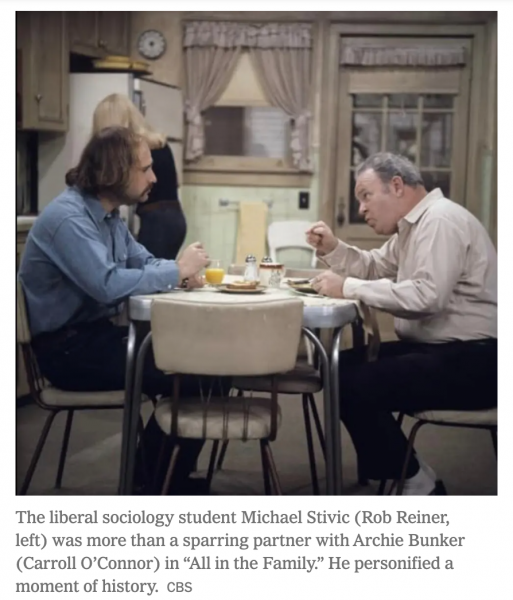
I do not know Nick Reiner. I met Rob Reiner through Chad Griffin and AFER. However, like so many others, I appreciated him “representing” hippies as caring progressives on “All in the Family.” He was similarly caring in real life, as evidenced by his humble, emotional reaction on Piers Morgan’s show, honoring Erika Kirk’s forgiveness of her husband Charlie Kirk’s assassin.
I do not know Nick’s story – I do not know the anguish of having schizophrenia and drug addiction. But I know in my heart his parents loved him to the moon and back. I suspect Romy and Jake and the Reiners’ friends are struggling not just with unimaginable grief but with how, in some way, to have compassion for this ill addict they loved who lived among them.
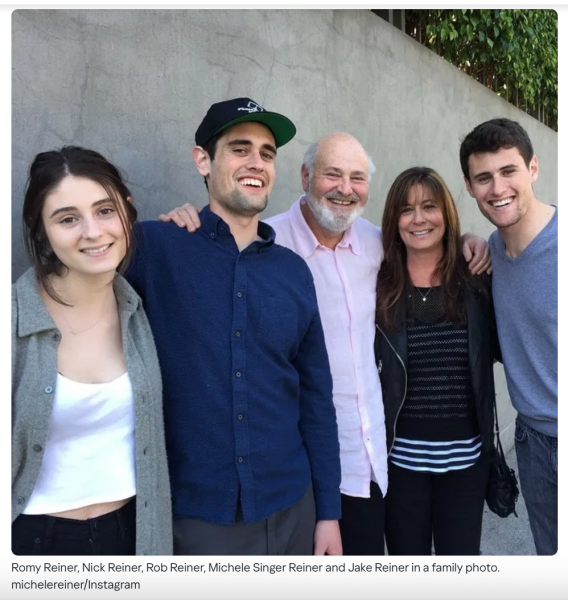
Perhaps this is an odd way to express gratitude to America’s greatest “good guy.” I hope by sharing my story, the spirits of Rob and Michele may realize they did everything they could – they did not fail their son. He, too, has individual freedom – including to make horrible wrong choices willingly, even those orchestrated by addiction. Or did mental illness combined with addiction strip him of that choice?
Forgiveness is not yet on the horizon. But perhaps a greater willingness for compassionate understanding can be.
And hopefully, by sharing these human frailties, those who are struggling will find the strength to defy stigma, fear, and addiction’s arrogance and reach out for help.
As for me, today, I humbly acknowledge: “There, but for the Grace of God, go I.”
SAMHSA’s National Helpline is a free, confidential, 24/7, 365-day-a-year treatment referral and information service (in English and Spanish) for individuals and families facing mental and/or substance use disorders.
This essay was updated from the original posted on Karen’s LGBTQ+ Freedom Fighters Substack.
Commentary
Love in the time of porn: a glimpse into the dating life of an adult performer
Our very own writer and lead interviewer AJ Sloan (and retired pornstar/current content creator) dishes on his own dating life and some of the more delicate details of finding connection as an adult performer.

I was recently at a holiday party, one of those seasonally messy affairs where the conversations get bolder as the drinks get stronger and some folks inevitably decide that “boundaries” are negligible. After a few rounds of Jenga and drinks, someone leaned in and hit me with the all too familiar question I’ve been asked time and time again: “So… what’s it like doing porn?” Cue the predictable follow-ups: “Do you, like, actually enjoy it?” and, inevitably, the million-dollar question my publisher had just asked me to write about days earlier: “What’s your dating life like?” At least this time, the interrogation into my very public sex life gave me the perfect opener for this piece.
Dating has come a long way since the rom-coms of yesteryear. If You’ve Got Mail were made today, it would sound more like: “You’ve got 56 unread texts, 13 reels from that cute twink you met once in San Juan, 3 Zoom meetings, a stalker on TikTok, a case of social anxiety… and some mail.” Between notifications, memes, and a constant influx of digital attention, it’s getting harder to pause and breathe, let alone build a romantic connection with someone else.
And if managing modern dating wasn’t already complicated enough, try stacking the stigma of being an adult performer on top of that teetering Jenga tower. Despite an apparent cultural “sexual awakening,” stigma toward sex workers remains deeply ingrained in most layfolk today. According to a 2022 study from the University of Victoria, Challenges and Benefits of Disclosure of Sex Work, nearly 70% of sex workers reported negative judgment from potential romantic partners after disclosing their work, while only about a quarter said it deepened intimacy or understanding. For an industry that thrives on exposure, we still live in a society where transparency may cost you connections.
I can only speak from my own experience – yes, for those not yet aware, I’ve been an adult performer and content creator for (gasp) going on four years now – but dating while doing porn is both surprisingly normal while also proving to be… uniquely complicated. I’ve had my share of relationships (and situationships). The biggest difference is that my line of work acts as a filter. Being upfront about what I do weeds out many folks who, well, let’s just say, are not a right fit for me. It’s a built-in red-flag detector. And in this way, I appreciate its utility.
When someone responds with pearl-clutching or over-sexualizing, it tells me they’re not ready for the kind of honesty and communication that my lifestyle requires. On the flip side of the coin, the people who ask questions with curiosity instead of judgment are often the most emotionally literate people that I have the pleasure of meeting.
Still, it helps to know I’m not the only one navigating these dynamics. I reached out to my friend and fellow performer Cody Seiya, one of my earliest collaborators and someone whose kindness and authenticity I’ve always respected and connected with.
“My boyfriend and I met on Grindr,” Seiya shared. “What started as a mind-blowing hookup turned into a beautiful relationship that’s been going strong for three years.”
Seiya began content creation during the pandemic, right after college. “At first it was just a way to make ends meet,” he said, “but it became something much bigger – creatively, personally, even romantically.”
Seiya’s story is one of many that are testament to the fact that real relationships can and do exist and thrive within our industry. But he also reminded me of how visibility can sometimes complicate intimacy. “Sometimes people feel like they already know me because they’ve seen me online,” he said. “They forget there’s a person behind the content.”
That illusion Seiya describes – of being “known” through our content – is referred to as parasocial relationships. That is, the one-sided emotional connection people form with public figures or creators. It’s the same process that makes fans feel close to a favorite celebrity, only supercharged by sex.
Social psychologist Dr. Eva Illouz has written about this in her work on emotional capitalism – how intimacy becomes commodified in modern culture. When vulnerability is part of your job, boundaries tend to blur. For performers, those blurred lines don’t go away when the camera stops. They can sometimes spill into our dating lives, shaping how others perceive your availability, your emotions, even your worth. It’s a peculiar paradox, being both hyper-visible and invisible. People think they’re seeing us when in reality, they’re seeing one version of us, a version that is essentially a performance.
The University of Victoria study also found something surprisingly encouraging. Sex workers who disclosed their profession early in dating were more likely to report higher relationship satisfaction and emotional safety than those who kept it a secret. Honesty, it turns out, doesn’t just protect you from stigma. It helps attract partners who are capable of handling truth. For me, that early disclosure is important and natural. It has the tendency to pass the mic. By being open and transparent, I then allow others to reveal who they are in response to it. Dating as an adult performer teaches you a way of emotional efficiency. You gain the ability to read who’s projecting their own fantasy onto you versus who’s genuinely curious.
When you really look at the bigger picture, there is a running baseline of people sizing up other people. Everyone gets judged time and time again – whether it’s based on their job, their beliefs, their bank account, or their social media presence. At the end of the day, I guess it is up to the individual to decide for themselves as to what extent they will indulge in their arguably natural instinct to place people in boxes based on said criteria.
Authentic connection comes when folks think past their impulses and pay attention to the whole person in front of them, when they stop leading with their libido and actually engage with one another. That’s when true conversation can actually begin. And it is that particular flavor of open-mindedness, in my humble opinion, that is entirely swoon-worthy. Green flags across the board.
Commentary
The perfect storm: Our queer infrastructure is in crisis
Pride began in a bar. If we lose our bars, we lose the heartbeat of queer liberation.
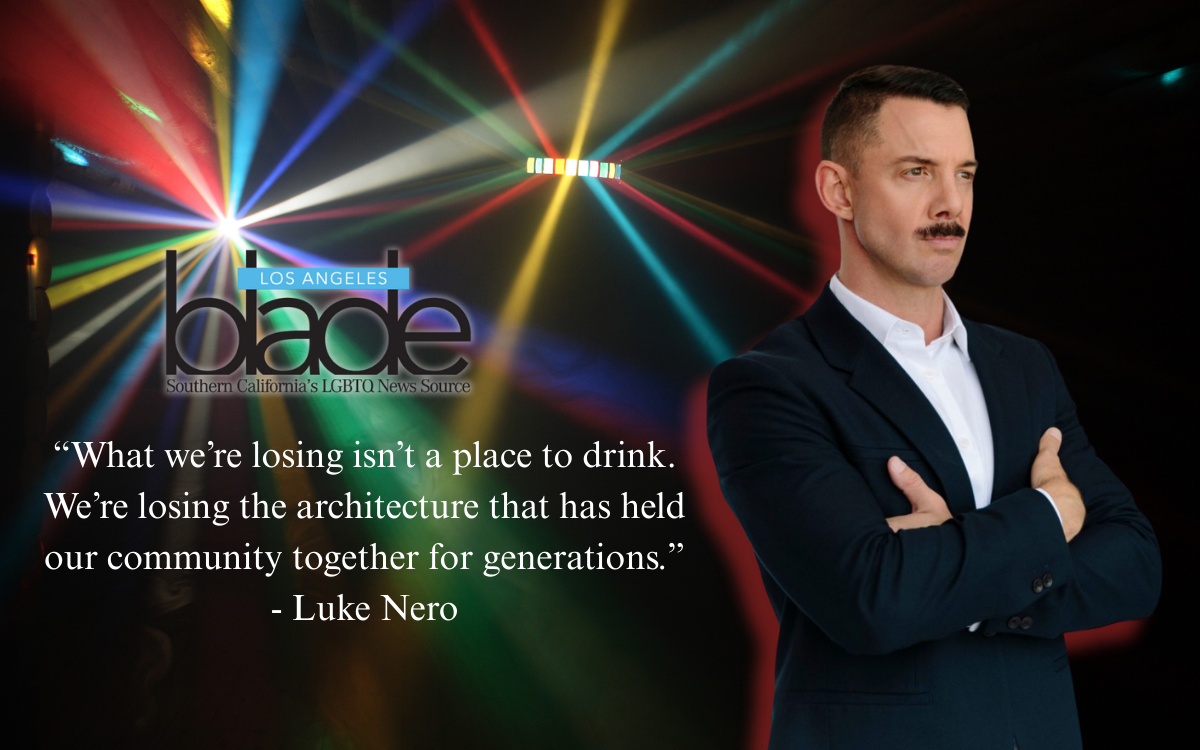
Queer infrastructure across the United States is collapsing. Not nightlife, not “the scene.” Infrastructure — the physical, social, cultural, and economic backbone that queer people have relied on for decades when nothing else would protect us.
The neon markers that once meant safety, belonging, and defiance are going dark. Entire ecosystems — entertainment venues, social houses, drag stages, queer workplaces, dance floors, community hubs, and the micro-economies that keep people afloat — are disappearing. What we’re losing isn’t a place to drink. We’re losing the architecture that has held our community together for generations.
And this isn’t guesswork. Between 2007 and 2019, the U.S. lost roughly 36–40% of its gay-bar listings, and more than half of lesbian-bar listings vanished. Even by 2021, the number of queer-focused venues recorded in national bar guides was about 40% below what it had been a decade earlier. The exact numbers vary, but the direction is clear. Our physical infrastructure is shrinking.
I’ve worked inside queer venues for twenty years. Long enough to know this isn’t a downturn; it’s a structural collapse. One venue closing — including my own struggles — isn’t the story. It’s one pressure point inside a much bigger storm.
Front 1: Economic Neglect
Queer-owned spaces have been hit by the same economic pressures crushing small businesses everywhere — rising rents, higher insurance costs, staffing shortages, and the general squeeze on independent operators. But unlike other industries, queer venues don’t have access to the same support structures, grant pathways, or advocacy groups that help businesses stay afloat.
At the same time, most funders genuinely believe they’re already “supporting the community” through Pride sponsorships, corporate floats, and seasonal visibility campaigns. That’s not malice — it’s simply where the cultural script has pointed them. Visibility has been positioned as the primary form of allyship, while the brick-and-mortar venues that keep queer people connected all year receive none of that investment. And because there’s no national body tracking queer-venue health or publishing financial data, the crisis stays invisible, even as other cultural sectors access emergency funds that don’t exist for us.
We didn’t lose relevance; we lost reinvestment. Visibility alone can’t sustain infrastructure.
Front 2: Cultural Complacency
And I’m not pretending I’m innocent. I’ve created Pride-weekend events that pulled crowds away from physical venues. Most people who’ve worked in this world have. That’s the point — Pride has turned into a gold rush instead of a homecoming. When a system rewards spectacle instead of stability, it will eventually burn through its foundations.
And maybe we’re all a bit rainbow-flagged out. When everything is rainbow, nothing feels radical. Visibility becomes décor, and the meaning behind it quietly erodes.
Front 3: Post-Pandemic Behavior
COVID didn’t just shut venues down. It reprogrammed how queer people socialize. This generation treats alcohol the way we treat nicotine — occasionally and with a little guilt. One drink is fine. Getting drunk feels dated. It’s tough to sustain community spaces when the culture itself has shifted from swigs to sips.
Front 4: Digital Diversion
Apps absorbed the social currency that used to flow through physical queer spaces. Flirtation, validation, hookup energy, and emotional connection — all of it can now happen behind a paywall or a profile.
And festivals? They’re not the enemy. Many are stunning, creative, and run by queer visionaries. But they’re experiences — not infrastructure. A three-day utopia every few months won’t replace the weekly rhythm of a real-world community. Festivals build memories. Venues build continuity.
Front 5: Generational Loss
The AIDS crisis didn’t just take lives. It wiped out a generation of queer operators, business owners, mentors, and organizers. The people who should have passed down knowledge never got the chance. Today’s surviving owners have no one lined up to inherit their roles. That wasn’t only a human loss — it was an infrastructural one.
Front 6: The Disappearing Ecosystem
During a recent trip to Florida, I toured a drag venue from the front door to the kitchen. Security, performers, bar staff, cooks — everyone moved with pride in what they did. It was a full ecosystem. A living, breathing workplace with its own culture and heartbeat.
When venues close, we don’t just lose “a bar.” We lose entire micro-economies. We lose livelihoods. We lose little worlds that have been built with love and skill. These aren’t side gigs. They’re careers.
Front 7: Cultural Invisibility
Promoters, DJs, drag artists, producers, and operators rarely get treated as cultural workers — even though their work shapes culture every weekend. Each night is its own creation: sound, mood, lighting, atmosphere, safety, release. But the people behind it all stay invisible, as if community magically appears when someone hits play.
Queer nightlife influenced mainstream culture long before influencers realized clubs were a backdrop.
Front 8: Community Accountability
And I’ll say this softly: it wouldn’t hurt if a few of the RuPaul girls — who can earn in one weekend what small venues make in a month — stopped by the places that raised them. Not charity — just presence. A drink. A photo. A wave. For small entertainment venues and social houses, that kind of drop-in can literally keep the lights on.
We all have a role in supporting the infrastructure that once supported us.
Front 9: A Language Problem
Words matter. “Nightclub” doesn’t describe the modern queer venue. These places host weddings, fundraisers, drag shows, community meetings, film shoots, health drives — they’re entertainment venues. And a “bar” isn’t just a bar. It’s a social house. You don’t need a drink to belong. You go for community, safety, and a familiar face. Language shapes perception, and perception shapes investment. You can’t save an infrastructure that people miscategorize from the start.
Front 10: Political Weather Shift
Political weather can change fast. If hostility rises — and in some places it already has — queer infrastructure becomes survival infrastructure again. These spaces turn instantly back into what they’ve always been: lifelines. They are not indulgences. They are refugees. And if we forget that, we risk having nowhere left to stand when the next storm hits.
It’s not nostalgia — it’s infrastructure.
Queer venues are civic assets.
If we lose them, we lose safety nets, jobs, and history.
This is not mourning the party; this is protecting the culture.
If you love queer culture, show up for the places that still hold the door open. Ask where your money goes. Support the rooms that give you music, connection, safety, and the chance to meet someone who changes your life.
Pride began in a bar. If we lose our bars, we lose the heartbeat of queer liberation.
Luke Nero has dominated the nightclub scene on both the East and West coasts with tentpole events that include Mr. Black, Rasputin, and Evita. He is the CEO and founder of Strut Nightclub in Costa Mesa, California, one of the only queer clubs in Orange County.
Commentary
Spoken solidarity: The linguistic tactics of queer communities in the Middle East
A glimpse into how queer communities – from mid-century Britain to today’s Middle East – utilize coded languages and methods of communication as devices of resistance and survival.

For any person, queer or otherwise, who has ever shrieked “slay” over mimosas at brunch or whispered “trade” to their gym buddy in reference to the beef cake in mid-squat, reading this article is now your homework. Class is in session, the library is open, and the seats are plentiful. Take one.
Long before “yasss queen” spread through TikTok like the clap through WeHo and Bravo was infused with a mouthful of “shade”, queer folks were already creating their own coded ways of communicating on the DL – entire secret languages laced with wit while fueling solidarity – created not for entertainment but for survival. From mid-century Europe’s Polari to the thriving queer slang of today’s Middle East and then some, these tongues act as both armor and art. They are a testament to the fact that when society tries to police who we are, we always find a way to clap back.
In mid-20th-century Britain, one of these argots – and arguably the most widely known – was Polari. Polari was spoken by gay men, theatre folk, and sailors due to homosexuality being deemed criminal. So many of the words birthed by Polari have made it into modern-day queer vernacular (camp, butch, drag, trade). But Polari did so much more than fluff our collectively queer vernacular. It protected LGBTQI+ folks who could be convicted, shamed, or shunned simply for living as their authentic selves. It gave way to coded communication – a wink, a nod, a clever use of wordplay – at a time when discretion meant life or death.
Today in the Middle East, queer communities continue to speak in code out of necessity, yes, but also as a form of resilience. In many states where homosexuality is still criminalised – especially in regions experiencing conflict – the risk that visibility imposes is too dangerous. When displacement, sectarian violence, and authoritarian crackdowns converge, words result in wounds. So, language transforms. It adapts to hiding in plain sight -in a glance, a sly play of words, a borrowed metaphor that says “I see you” to those who are actually listening, those who need to hear it – while going unnoticed by those who aren’t and don’t.
In the din of places like Lebanon, Iraq, the Gulf States, or even refugee camps around Syria and Gaza, queer people face double – if not triple-layered dangers: authoritarian laws, war, and displacement. Under these types of conditions, conventional speech can be a luxury if not a liability. It is in these instances that the queer and gender-diverse communities turn to tongues that whisper under the radar.
In the Gulf, the term ṣaf‘ūn (صَفْعون) is used by gay men to mean someone attractive, originally referring to court “slapped ones” in the Abbasid era. In Iraq, the term mustarjil(a) (مُسْتَرْجِل/مُسْتَرْجِلة) refers to a woman who presents as masculine – a term brimming with stigma but repurposed sometimes among gender-nonconforming people. In other areas, from Morocco to Tunisia, comes shawwāya (شَواية) meaning “grill-rack” used for a sexually versatile gay man. This term, like many others, is playfully encrypted for the queer ear.
In the queer underground of the Arab world, these avenues of coded communication work as a unifying force that fosters solidarity in the community. The recently published bilingual book The Queer Arab Glossary, composed by Lebanese-based designer and activist Marwan Kaabour, collected and comprised over 300 such terms across dialects – including Gulf, Iraqi, Maghrebi, and Levantine. One queer Iraqi contributor recalls how, at times of displacement, the ability to exchange a word like “Boyāt” (Boy-āt in Gulf dialect for masculine-presenting woman) quietly in a conversation on or offline becomes a lifeline for many. In Lebanon’s post-conflict environment, a study found queer refugees had to depend on coded slang and private networks because open affiliation carried the far too real threat of state-orchestrated scapegoating.
These communications don’t just exist in the hush-hush corners of bars and dressing rooms. Today’s queer-coded languages of the Middle East and beyond thrive in the all too familiar glow of mobile screens. Digital spaces haven’t just given these cryptolects new life – they’ve mutated them into something faster, slicker, and far more algorithm-resistant. Because whether it’s the state, the platform, or the algorithm that’s surveilling, our methods of communication had best be incognito.
Of course, there’s no single “queer dialect” of the Middle East. Much like the region itself, queer-coded speech is wildly diverse, shaped by geography, humor, trauma, and the delicious specificity of whichever local culture is utilizing it. In Lebanon, queer slang revels in camp – one part Beiruti French, one part diva-worship (and then some).
In Iraq, terms carry the weight of sectarian histories. Words like mustarjil(a) are steeped in stigma but sometimes reclaimed as sly, irrepressible badges of identity. In Egypt, queer slang leans toward comedic exaggeration – melodramatic metaphors and references to TV stars that only the gayest of the gay can catch. In the Gulf, the codes often draw from classical Arabic, giving them an almost poetic quality. These differences aren’t arbitrary cultural signifiers. They are proof that queer life in the region is neither monolithic nor imported. They are as local and organic as they come.
Modern queer slang in the Middle East wasn’t born yesterday. These colloquial collections are descendants of older linguistic traditions that were queer-coded long before the word “queer” even existed. Take pre-modern Arabic poetry. So much of it is dripping with homoerotism that, if it were published today, it would make a nun blush and a priest, well, blush somewhere else. Poets of the Abbasid era wrote about beardless boys with gazelle eyes in verses that are still memorized in schools (albeit with the homoeroticism politely tiptoed around). Sufi poetry wove divine love and earthly desire into metaphors so gender-fluid that academics still argue about who the “beloved” actually referred to.
Ottoman culture wasn’t shy either. Male beauty tropes were celebrated widely and openly, and love poems addressed to young, pretty dudes circulated far and wide. And across the region, what historians now refer to as “shadow cultures” preserved pockets of man-on-man love and longing in storytelling, ritual, performance, and social customs.
At its essence, queer-coded languages tell us not only how communities communicate, but who they are. They reveal a sense of humor sharpened under pressure, jokes that double as shields. They reveal gender fluidity that far predates Western gender discourse, woven into wordplay and performance. They reveal something that the headlines so often miss – that queer life in the Middle East is not solely defined by suffering and sacrifice. It is defined by creativity, stubborn joy, and an innate understanding that community is built as much through laughter as through shared struggle.
Queer dialects, cryptolects, and coded talk across the region are living proof that language can be an archive of resistance, ingenuity, desire, and identity. Even when the world insists on silence, queer folks in Beirut, Baghdad, Basra, Tehran, Istanbul, Cairo, the Gulf, and beyond continue to speak. Not always loudly. Often in code. Always with intention.
The colloquial terms I mentioned earlier – camp, butch, drag, trade – may originate with Polari, but they didn’t evaporate with the change of times. They survived and integrated into queer vernacular. What this shows us is that coded speech is not simply a relic of oppression but something enduring. And just like Polari, these languages remind us that when society tries to snuff us out, we don’t disappear. We evolve. In the Middle East today, in societies torn by war, authoritarian collapse, or enforced silence, coded queer speech thrives just as hard as those using it. These words may hide in plain sight, exist in the hush-hush of chat groups, or circulate in graffiti and art collectives. But their purpose remains profound – they say we exist. Even when the society around you might deny it, target it or try their damnedest to erase it. We exist.
Commentary
Bubba Trump: the Prez and the infamous files
Comedian Allison Reese gives her thoughts on the news of the day

“Ask him if Putin has the photos of Trump blowing Bubba.” Much like the aforementioned “Bubba,” I am blown away. A different kind of blown, but blown nonetheless! Last week, leaked emails from child-sex trafficker and President Trump’s ex-bestie, Jeffrey Epstein, have been all over the internet. This email between Jeffrey and his brother, Mark, in particular, has been everywhere due to the email being fellatiocious1 in nature—
Fellatiocious1 [Fel-ay-she-oh-sh-es] Adjective — For the use of describing getting head.
It’s also gone viral because “Bubba” is a known nickname of former President Bill Clinton, husband of Trump’s foe and political opponent, Hillary Clinton. While it is huge news, I am not blown away by this being about Trump giving head to the former head of state, and known slut (derogatory), Bill Clinton. Although it is funny as hell.
I want to take a moment to urge us all as Americans to remember that Republicans are gay. They are as gay as my Home Depot-orange overalls from WildFang that have a lesbian custom-crafted Chappell Roan HitClip attached to them via carabiner. Republicans are usually the only kind of gay that it is a sin to be: shame-filled day-walkers who pretend to be straight “Christian” men who cause real harm to queer communities with their lies and their rightwing policies and ideologies. I call them day-walkers because they walk around in the daylight with their tradwives, their hell-gripped privilege, and “traditions,” then they traipse around at night in their true form looking for secret dick they wish to punish in the daytime. That and because I am pretty sure they suck blood — no homo! So yeah, IMO Republicans are HOMO. They are the only political party causing seismic events at Grindr every time they come to town. Piece it together: Trump doing gay shit? One of the more Republican things he has done.
But what I am most blown by is how we bypassed the first part of that email that asserts that Putin had blackmail on a sitting president. “Ask him if Putin has the photos of Trump blowing Bubba.” This is about the very same adversary that a bipartisan Senate concluded had interfered with the 2016 presidential election in an effort to help Donald Trump win. Crazy how we can read that entire 11-word sentence. 11! Angel numbers! Make a wish! — and not first and foremost realize that the story there is not the GAYllatio2
GAYllatio2 [Gay-Lay-She-Oh!] [Sounds like RUFIO but gay] Verb — The act of receiving gay head onto a penis part.
On the flip side, kinda crazy that Trump being kinda gay would mend the political divide in America and get people to pay attention. It’s the wrong kind of attention, but it’s somewhat in the right direction. Maybe we just ALWAYS have to couch an important piece of news with some fuck-ass salacious crap for the American public to finally pay attention. Do I have to tell you that Trump and the Saudi crown prince were sitting on the very couch that JD had fucked when they dismissed the brutal killing of an American journalist, Jamal Khashoggi? Maybe if Trump posted hole on the main, then people would start to notice that we are in late-stage capitalism! Or maybe the Dems need to figure out how to make a TikTok about “6-7” for the American people to finally see that the president and his administration are liars, ghouls, and rapists. At this point, I am down for whatever it takes to get people to see that he has only ever been for himself and sick billionaire friends.
But is a win, a win? Is getting Trump to look gay to his conservative base (societal bottoms) (derogatory) the only way to get them to see that he has been a huge gross liar this whole time? Are the American people only going to care if they find out that there are boys and men also abused in the files? All I can do is continue to stay active in supporting my communities, continue to be active in politics, and pray for the victims regardless of gender, regardless of race, regardless of whether or not they support Marjorie Taylor Meane1
Marjorie Taylor Meane1 noun; bitch — The nickname Trump shoulda gave given her. But he is stupid, and his brain doesn’t work. Besides, the gays deserve the nickname more.
In the name of the father, the son, the tia, Tamara, (sincere) Amen.
COMMENTARY
Dating during the holidays: Why cuffing season hits GBTQ men so hard
For GBTQ men, the holidays can be one of the loneliest times of the year. Seasonal depression ramps up, it gets darker earlier, it’s colder, and suddenly everyone around you seems to be coupling up

The holidays do something to us.
They pull at our hearts, our memories, our wounds, and our longing, all at the same time. And honestly? Dating during this season can feel like an emotional obstacle course.
For GBTQ men, the holidays can be one of the loneliest times of the year. Seasonal depression ramps up, it gets darker earlier, it’s colder, and suddenly everyone around you seems to be coupling up. It’s like the whole world collectively decided to jump into a cuddle puddle and forgot to send you the invitation.
And that’s why “cuffing season” is a real thing.
People want warmth. They want touch. They want a body next to them under the blankets while the rest of the world posts family photos with matching pajamas.
We want connection.
We want closeness.
We want someone to come home to when everything feels cold.
But here’s the deeper truth — especially for queer people: A lot of us didn’t grow up with magical holiday memories.
Many of us were rejected, or disowned, or made to feel “different,” and the holidays can bring all that trauma back like it’s happening in real time. While other families were singing carols, some of us were hiding in our rooms, praying no one would notice how “different” we were.
So now, as adults, having a partner during the holidays can feel like having a chosen family.
It feels safe.
It feels comforting.
It feels like someone finally picked you.
And there’s nothing wrong with wanting that. We all deserve love. We all deserve someone who makes us feel held.
But…
(you know there’s always a “but”)
We also have to ask ourselves:
Is this connection real? Or is it holiday loneliness wrapped in mistletoe?
Are we craving a partner, or are we craving comfort?
Does our heart need love? Or does it just need some warmth and self-compassion?
Because cuffing season relationships can be beautiful, but they can also be Band-Aids. Temporary. Convenient. Easy.
The real question is:
Do you want a partner for the holidays… or a partner for your life?
And if you’re single right now, as a matchmaker, I want to share something important:
You’re not behind.
You’re not failing.
You’re not missing some magical holiday checklist.
Being single during the holidays is not a punishment, even though it can feel like it when you’re sitting on your mom’s couch watching your siblings and cousins live out their Hallmark movie fantasy. Their husbands, their wives, their perfect kids, everyone in matching sweaters — and you’re like, “Cool, I’ll just be over here in the corner petting the dog.”
But disappearing into the extra bedroom and crying into a pillow isn’t your only option.
(Though if you need a five-minute cry, listen… you’re human.)
As a private matchmaker, here’s what I tell my clients — and myself! — every year:
1. You don’t need a partner to belong.
Chosen family is real. Friends are real. Community is real.
Sometimes your holiday joy comes from the people you choose, not the people you were born into.
2. You are allowed to create your own traditions.
A queer Christmas.
A gay Friendsgiving.
A holiday dinner with your spiritual family, your gym friends, your brunch crew, your book club.
Your joy isn’t limited to the house you grew up in.
3. Self-love is not a consolation prize.
It’s the thing that makes every relationship — including your future one — healthier.
4. The holidays aren’t a deadline.
Just because the world feels coupled doesn’t mean you have to rush into something just to survive December.
As a matchmaker, I see the other side too. And here’s what I want you to remember:
A lot of people do find love during cuffing season — real love, lasting love, beautiful love.
Because when loneliness rises, so does honesty. People open up more in the winter. They’re more vulnerable and willing to take a leap.
But whether you’re dating, single, complicated, or “it’s a long story,” know this:
You are not alone.
You are not behind.
And the holidays don’t define your worth.
If you end up in a relationship this season — amazing.
If you don’t — you still belong, you are still loved, and your story is still unfolding exactly how it’s supposed to.
And who knows…
Maybe next December, you’ll be the one cuddling up with someone who feels like home.
But for now?
Give yourself grace.
Give yourself compassion.
And give yourself permission to experience the holidays in the way that feels right for you.
You’re not broken.
You’re not missing anything.
You are enough today, this month, this season, all of it.
Daniel Cooley, LGBTQ+ Matchmaker & Co-owner of Best Man Matchmaking – California’s premier service for queer and trans men seeking emotional connections. Learn more here.
Join us at our Gay Singles Night on Thursday, December 3rd, at the Geffen Playhouse with LA Blade’s Matchmaker Daniel Cooley for an unforgettable evening! This evening includes a post-show talkback. Use code: LAB49T17 for $49 (includes per ticket fee) for Premium, Section A, or Section B seating. No ticket limit. No refunds or ticket exchanges. Visit geffenplayhouse.org to purchase your tickets. Code also valid for performances Dec.4-7, including weekend matinees.

Commentary
The cost of competing: Olympic hopeful faces suspension for making ends meet with OnlyFans
Olympic hopeful Kurts Adams Rozentals, accomplished paddler earning a mere £16,000 a year in funding, turned to OnlyFans to make ends meet, only to be suspended and risk losing his Olympic dream for trying to stay financially sound

Another day, another athlete whose career is in jeopardy due to their OnlyFans side hustle. Meet 22-year-old paddler Kurts Adams Rozentals. He began posting what he refers to as “edgy videos” on OnlyFans back in January in order to afford training and living expenses. Now he’s being suspended by Paddle UK and faces being removed from the pathway to the Olympics – forced to choose between his athletic dream and the income stream.
On paper, Rozentals was living the Olympic-bound dream. He won silver in C1 at the Under-23 World Championships in 2023. He was placed on the UK’s elite “World Class Programme,” funded by lottery grants via Paddle UK and UK Sport. But the grant? £16,000 a year. That’s laughably low when trying to get by, let alone in a city like London.
In a recent interview with professional speedskater Conor McDermott-Mostowy, he shared some similar insight into the struggle of funding for thriving athletes:
“The reality is that Olympic sports are not accessible or sustainable for most people… Many world-class and Olympic-calibre athletes earn less than minimum wage while dedicating more than full-time hours to their sport.” LA Blade
In other words, even if you’re punching above your weight in terms of results and on the “right” program, the financial foundation is still precarious at best.
So, Rozentals chose to create adult content, start an OnlyFans account, earn six-figures (werq), and ease both his financial burden and his mind. He stated, “It was the first time in my life I saw real progress in my financial situation. It was the first time I was able to fund the training myself… the first time I was able to get my mum something nice after her sacrificing everything … And it came from crazy videos like the one that got me banned.” Hell, if that isn’t uncomfortably relatable: you feel stuck, ignored, underpaid, desperate – and you get proactive in creating a solution.
Enter the moral panic. In April, Paddle UK suspended Rozentals from the program, removing him from the team pathway, pending investigation. They cited “offensive use of social media”, “indecent, offensive, or immoral behavior”. The media narrative? “Olympic hopeful banned after filming sex act for OnlyFans during flight.” Points for creativity, Kurts.
To put it bluntly, this is less about some video on a plane (yes, it may have been pretty wild, yes, it may have breached social-media rules) and more about 1) how we undervalue our athletes; 2) how we penalize sex work and adult-content creators who dare to dual-exist; and 3) how hypocritical the entire situation is.
The rules state: “Don’t bring the sport into serious disrepute.” But what about a sport that actively refuses to pay its athletes enough to live on and forces them into side-hustles? Many sports stars have OnlyFans or alternative platforms now, so why single out Rozentals?
This is no isolated incident – Rozentals is not alone in those whose professional life has been placed in jeopardy – or destroyed – due to their involvement in adult entertainment. In one stark example, Erick Adame, a weatherman in New York City, lost his job after videos of him participating in adult webcam streams anonymously surfaced and were sent to his employer. Despite the fact that the activity was consensual, the leak triggered his suspension and eventual termination. Adame later acknowledged the consequences, but also refused to apologize for being openly gay and sex-positive. Adame’s case is a testament to how adult-content involvement, even if legal and consensual, can result in devastating professional repercussions when employers decide it clashes with their brand.
The stigma that looms over adult content and entertainers is palpable. “You’re unclean. You’re not respectable. You’re unacceptable.” But I’ll bet my bottom dollar that more than one decision-maker at Paddle UK has paid for (and fapped to) OnlyFans – if not Rozentals then someone else’s. Yes, I said it. The people policing the “shame” are more than likely themselves to be patrons of the same industry that they oh-so self-righteously look down upon. Boom.
For Rozentals, this was about survival. Not everyone is born into parental wealth or has a sponsor stacking checks to pave the way for full-time training. Make no mistake – if he’d been born with a rich daddy or trust fund, this wouldn’t be happening. The system is set up for those with means, not those with grit. Rozentals was also quoted as saying, “It’s a crazy world we live in. I don’t regret it.” He was in a state of mind where the cash from his content was the first time he saw real financial progress. He was able to gain back some autonomy and worry less about getting by, which I could only imagine allowed him to focus on – oh, I don’t know – training. Save the purity test. He took ownership.
Adult content isn’t a “vice” if it’s consensual and legal. The stigma around sex work is real, and it’s tired. A recent study found that workers in the sex industry face higher levels of discrimination, mental-health fallout, and social exclusion. That kind of harm doesn’t come from the work itself – it comes from the way society treats the folks doing it. Until we can separate moral panic from genuine concern, we’ll keep failing to protect and respect those who make their living in this space. The conversation should be about safety, consent, and dignity – not shame.
So what’s the takeaway? To stand in judgment of Rozental’s hustle is to ignore economic reality. It’s to enforce a moral standard that only the privileged can afford. It’s to shame the very hustle that keeps people afloat. If he chooses to keep his OnlyFans account, he might forfeit his shot at the Olympics, but he keeps his livable income. If he trashes it, he returns to a system that will not pay him enough to live on. That’s not a win. That’s a lose-lose.
Here’s to Kurts Adams Rozentals. May your paddle find clear water, your bank account soar, and your daring subvert the far too outdated rules that punish ambition.
Opinions
Mattachine Society in LA marks 75th anniversary
Seven gay men met in Edendale home on Nov. 11, 1950.
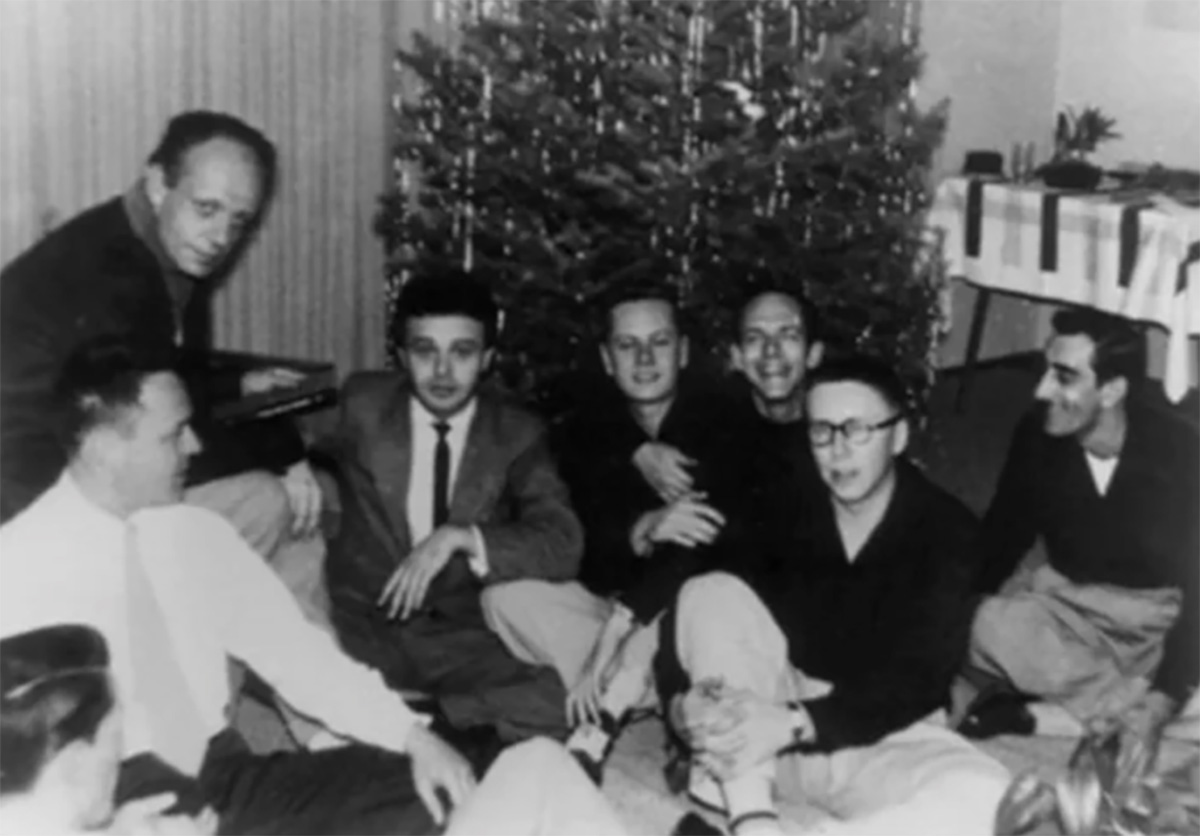
On Nov. 11, 1950, Veteran’s Day, seven homosexual men met in a home in what was then called the Edendale section of Los Angeles, now referred to as Echo Park. They came together, secretly, recruited by Harry Hay to found the Mattachine Society, the commencement of the long march to freedom by LGBTQ people in the United States. A statue needs be erected in L.A. to honor those seven men: Hay, Bob Hull, Chuck Rowland, Rudi Gernreich, Dale Jennings, James Gruber, and Konrad Stevens.
I still get chills as I read the oath of initiation taken into the Mattachine that day to the sounds of Pachelbel’s “Canon” softly playing in the background, an oath eventually heard around the world: “We are sworn that no boy or girl, approaching the maelstrom of deviation, need to make that crossing alone, afraid and in the dark ever again.”
In that oath about the “boy or girl,” the word “deviation” reverberates through a thousand years in the West of hetero supremacy and enforced heterosexualism with all that implies. All LGBTQ people were once that “boy or girl.” Thus began a core principle of LGBTQ community — we assume responsibility for each other.
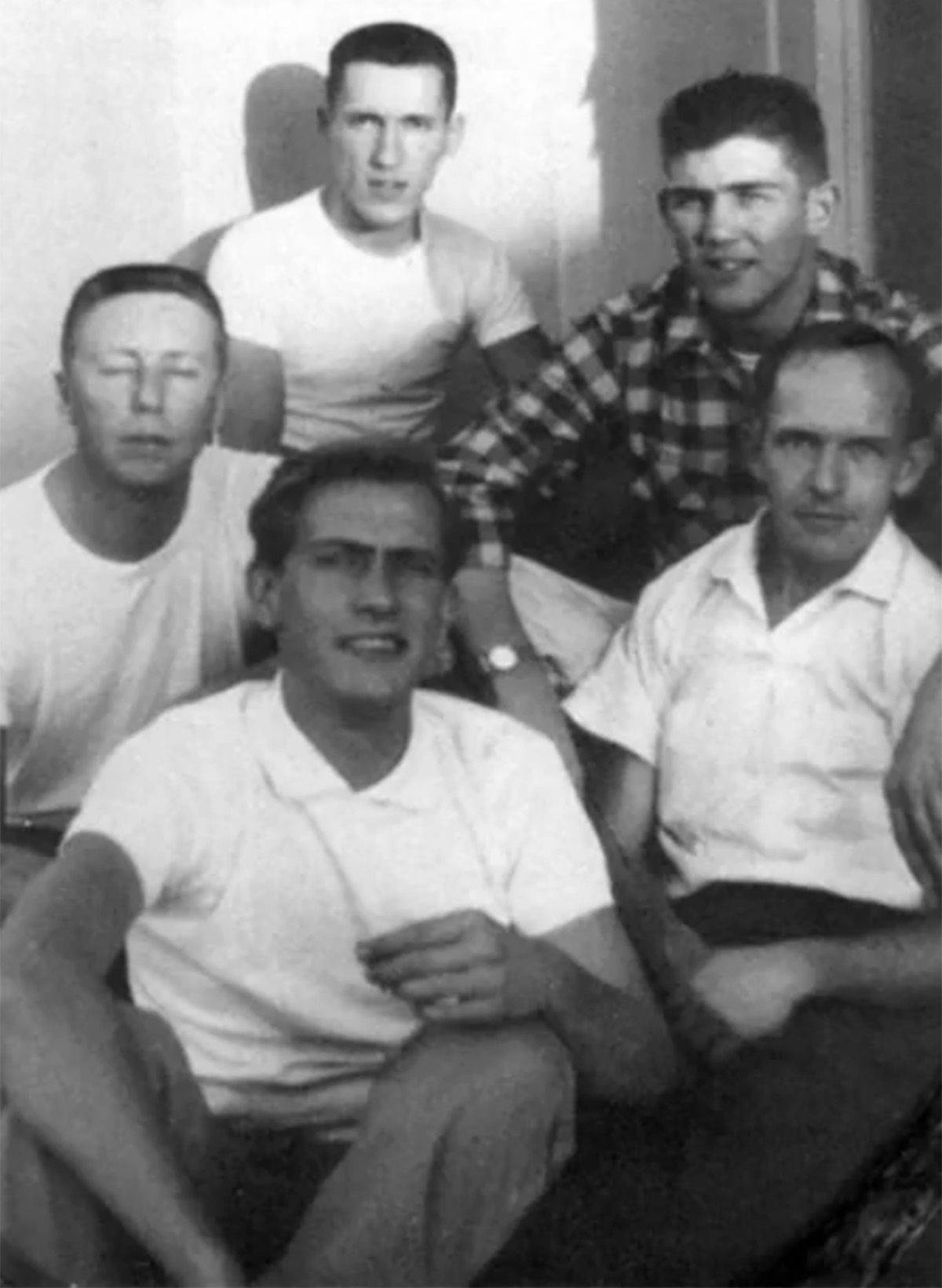
Nov. 11, 2025, marks the 75th anniversary of that moment. As far as my information at this time, as a gay elder, I’m embarrassed to report to those seven gay ancestors: not a single event is planned in L.A. to commemorate that historic date, just as L.A. Pride occurred in WeHo on the 50th anniversary of the Stonewall Rebellion, the reason for Pride’s existence, without ever mentioning a word about Stonewall.
Why is that erasure of important LGBTQ history happening in L.A. and elsewhere? In previous articles in the LA Progressive, I have tried to explain that erasure by the Elite Capture of the LGBTQ community with top-down leadership, a total blackout of local news or investigative journalism, community members becoming spectators rather than participants, and new community moral values that reduce everyone to donors and consumers.
While a very short-lived effort was made in Chicago in the 1920s, which was quickly broken up by the police, the Mattachine represents the first successful attempt in the U.S. at organizing homosexual men and women. They used the oppressor’s word, “homosexual,” to describe themselves. After World War II, several of the men had been members of or had flirted with the U.S. Communist Party or were members of other progressive organizations, where they learned organizing skills, analysis of social problems, and secret organizing. It was that secret organizing, as necessary as it may have been, that became its Achilles’ Heel. Hay was kicked out of the CP by CP leader Gus Hall’s purge of known or suspected homosexual men and women after World War II.
The name “Mattachine” came from the word “matticini,” one of the names for jesters in royal courts of medieval Europe which Hay deduced from his research were homosexual men.
The Mattachine is important for more than just existing for three years (1950-1953). In its original organizing “manifesto,” written by Hay, for the first time in U.S. history, homosexuals identified themselves as an oppressed minority group. The document also declared that a hidden homosexual culture existed. Also, it implied that collective political action was needed. That collective political action eventually came from Mattachine’s grandchildren with the fire and fervor of the collective action of the Gay Liberation Revolution (1969-1985) — the Great Awakening. Will Roscoe’s “Radically Gay” will introduce you to this valuable historical written material of the Mattachine.
The Mattachine was a top-down organization based on a secret model of five levels that had been used by the Free Masons in 15th century Europe and later employed during World War II by the French Resistance. The original seven members were on level-five and newcomers on level one, not knowing who was on the levels above them. Such organization, it was felt then, was necessary due to the viciousness and life destroying consequences at that time by U.S. hetero supremacists if homosexual identity were ever made public. Until the 1969 Stonewall Rebellion and its aftermath, sane paranoia based on individual protection and survival characterized homosexual reality.
The Mattachine’s most important contribution then was the use of private discussion groups that gave gay men and lesbians, for the first time, an opportunity to talk with each other about their lives and how hetero oppression was directly impacting them. But these groups often met cautiously.
There was one discussion group in an apartment building in Hollywood that required members to arrive as fake male-female couples, the men wearing male attire and the women in dresses, lest the neighbors suspect that a homo group was meeting next door and alert the LAPD, who could soon be knocking on the door.
By late 1952-early 1953, it was reported that Mattachine had created almost a hundred discussion groups in California with about 2000 participants, a stunning achievement for the early 1950s. There were also Mattachine organizations happening in New York City; Washington, D.C.; San Francisco; and elsewhere. The discussion groups by then were taking on a more grassroots character with a wide range of people from various political proclivities and social classes, but, given the enforced racial segregation practiced in L.A. then, virtually all were white. There were whispers about their own publication.
Then, in March 1953, all hell broke loose when Paul Coates, a widely read newspaper columnist in the U.S., reported publicly for the first time the existence of the Mattachine in Los Angeles and the ties of some of its organizers to the Communist Party during the Red Scare period. I speculate that Coates was tipped off by J. Edgar Hoover and the FBI who, after their first priority, the Red Scare, focused on their second priority, the Homo Scare.
The Mattachine was thrown into turmoil, not knowing whose outing was next, and the seven level-five men unmasked themselves.
At a meeting of the Mattachine at the First Unitarian Church, then on Crenshaw Boulevard, in the Spring of 1953, Hay and other founders resigned in the best interest of the organization, which was taken over by conservative Hal Call and moved to San Francisco, which is a sad story for another time. In my many dialogues with Hay about this period, he always referred disdainfully to the San Francisco group as the
“Second Mattachine,” to clearly differentiate it from the first.
Out of that chaos, in Los Angeles was formed ONE, Inc., which ushered in the conservative, Republican-led Homophile period (1953-1969), centered in Los Angeles, that recorded successes and failures which I have written about previously in the L.A. Progressive.
One essential way of understanding the Mattachine and Homophile periods is through the lens of the historiography of liberation movements. Both the Mattachine and Homophile years represented what is seen as “secondary resistance,” which involves the preparation of an oppressed people for liberation through discussion, writing, education, and some organizing of an elite nature. The “Big Bang” of the Gay Liberation Revolution was “primary resistance,” which involves direct action against the power of the oppressor, replaces it, and proactively creates a new sense of community free of the previous oppression. Or so they say.
One of my teachers, Malidoma Some, taught me about the importance of honoring ancestors as an essential ingredient of maintaining a healthy community. He also taught me about eldering. Among the Dagara people in Burkina Faso, from which he came and was an initiated shaman and initiated elder (also with two earned Ph.Ds. from the Paris Sorbonne University and Brandeis University), one of the important roles of elders was to scold the village for any shortcomings in fulfilling their responsibilities. Only elders had the authority to do that scolding.
As a Gay Tribal Elder, I send out a potential scold particularly to functioning and conscious LGBTQ adults and youth in the L.A. community. You are the boy or girl the Mattachine swore to protect. You are the great, great grandchildren of those pioneers. You have ancestor responsibilities. You might bring shame to a community by disregarding that important legacy. Being me, I also warmly say to you that you can always redeem yourselves. The 75th anniversary year of the Mattachine is just beginning on Nov. 11, the founding date in 1950. There is time during this coming year to be accountable in some notable way.
As the remarkable poet Kevin Young wrote recently, “the dead won’t let/us be.”
Don Kilhefner, Ph.D., has been a gay community organizer for the past 60 years in Los Angeles, nationally, and internationally.
COMMENTARY
Abandoned by the system: How CHLA turned its back on trans patients
Lu’s personal story captures the emotional and medical fallout of CHLA’s decision, exposing the broader issue of institutional retreat under political pressure.

Lu Orona recounts his experience beginning transition at Children’s Hospital Los Angeles (CHLA) — the same institution that recently announced it would no longer provide gender-affirming care, even to young adults who have relied on it for years.
When I was 17, I began my medical transition at Children’s Hospital Los Angeles (CHLA). Getting there took more than a year of obstacles: endless referrals, canceled appointments, and being told again and again that “we don’t do that here.” CHLA became my first real opening, the place that finally treated me as someone who deserved care instead of as a problem to be managed.
Before that, I had lived in a body that never felt like mine. I didn’t know what safety or ease felt like until I began testosterone. A year later, CHLA approved me for top surgery. For the first time, I could breathe deeply without the weight of a binder or the heavier weight of a healthcare system that had long rejected me. It was the first time I felt whole.
At my first consultation, I was shaking, expecting another rejection. Instead, I was treated with dignity. The day I gave myself my first testosterone injection. I cried, not from fear, but from the overwhelming sense that I was finally allowed to exist as myself. It was the beginning of a freedom I had been told I’d never have.
In the months that followed, the suicidal thoughts that once defined my days began to quiet. For the first time, I felt alive rather than just enduring life. I could laugh with friends, feel the sun on my skin, and experience my body as my own. CHLA had become my anchor in a world that so often told me I didn’t belong.
Then, this summer, that lifeline was cut.
In July, CHLA announced it would stop providing gender-affirming care, not just for minors, but for young adults like me. At 23, after five years of consistent care, I was told that my treatment would end. The same hospital that once helped me feel safe had withdrawn that safety without warning.
The decision is cruel in its inconsistency: CHLA continues to offer hormones and surgeries to cisgender patients, yet those same treatments are now off-limits for trans people. The hospital’s public statement framed the change as a policy for minors, but I stand as living proof that young adults are also being abandoned, with consequences that are immediate and devastating.
Losing CHLA doesn’t simply mean finding another doctor. It means starting over in a healthcare maze filled with waitlists, insurance denials, and clinics that treat trans care as an afterthought. I’ve lived this before. When I lost access to testosterone due to an insurance gap, my body shifted rapidly, my periods returned, my hormonal balance collapsed, and my mental health deteriorated. It took half a year before I felt stable again.
This is not only about healthcare logistics. It’s about trust, and how fragile it becomes for people who already face discrimination at every level of the medical system. Trans people experience higher rates of anxiety, depression, and trauma precisely because our access to care is never guaranteed. When an institution like CHLA walks away, it reinforces a message that has haunted us for decades: our health is conditional, our lives negotiable.
Accountability must come now, not later. If one institution retreats, others have a moral duty to step forward. Leadership in healthcare cannot mean showing up for Pride Month and disappearing when controversy arises. It must mean sustained, public, and enforceable commitments to trans patients—commitments that do not bend under pressure. Symbolic support is no longer enough. What we need are permanent policies and protections that make our care non-negotiable.
This responsibility extends beyond hospitals. Lawmakers, insurers, and the public must recognize that gender-affirming care is not elective. It is evidence-based, essential, and for many of us, life-saving. When it is stripped away, people suffer and some will not survive. The impact reaches far beyond youth, affecting young adults like me who are left without options mid-treatment.
This moment cannot be allowed to fade into another headline. Each closure, each withdrawal of care, pushes trans people back into silence and despair. CHLA may have stepped away, but I will not disappear with it.
We deserve a future in which trans people do not merely survive but thrive. That future is not an abstraction; it is possible, and the fight for it begins now.
Lu’s op-ed was presented on behalf of the California LGBTQ+ HHS Network in honor of Transgender Awareness Week 2025
Commentary
When ego trumps empathy: Nicki Minaj MAGAs out in recent tweets that no one asked for
Minaj’s queer audience deserves an icon who lifts up their voices, not a disillusioned diva who spreads discourse drama disguised as morality

What has the subtlety of a starship, the ego of a m***a-fuggin monstuh, and recently lost their god damn mind? If you guessed Nicki Minaj, you hit the nail on the bobble-head. And if you questioned my use of the word “recently,” well, you got me there. This one’s been spiraling for a minute – and now with a heavy dash of MAGA flair.
Miss Minaj, né Onika Tanya Maraj-Petty, has recently praised our presidential cabinet’s decision to threaten military action – “guns blazin” (sic) – against Nigeria over the alleged slaughter of Christians. In response, Trinidad-born Minaj, aka Nicki the Ninja, took to Twitter… I mean, X… to voice her support.
“No group should ever be prosecuted for practicing their religion. We don’t have to share the same beliefs in order for us to respect each other,” she tweeted. “Numerous countries all around the world are being affected by this horror, and it’s dangerous to pretend we don’t notice.”
Yes, Nicki, I full-heartedly agree. Let’s start with our own country, shall we? Hate crimes against Muslims in the U.S. rose 158% last year, and this from a nation that spent centuries forcing Indigenous peoples to abandon their languages and spiritual traditions in the name of “Christian civilization.” Perhaps step one toward actual moral leadership abroad is taking accountability at home. Just saying…
Nicki continued:
“Thank you to the President and his team for taking this seriously. God bless every persecuted Christian. Let’s remember to lift them up in prayer.”
It’s never too late to be saved, Nicki. But is this in any way, shape, or lace-front form an authentic awakening? Or is this just another lyric in the gospel of hypocrisy that’s been her brand for the better part of a decade?
While Minaj, aka Roman Zolanski, tweets Bible scripture on one hand, the other’s been busy dishing out digital assaults of the unprovoked variety – at Megan Thee Stallion, Cardi B, Miley Cyrus, and pretty much every and any woman who’s dared to simply exist within a mile radius of her spotlight. It’s been a minute since I took a theology class, but I’m pretty sure Jesus preached forgiveness, not trolling (shout out to Fr. Michael, I retained something).
Minaj’s unwielding vitriol toward fellow female artists is a trope that speaks volumes not of her confidence but of deep-rooted insecurity. For some time now, Nicki has rallied her fanbase not to advocate for those in need but to bully her songwriting sisters, to mock their appearances, and diminish their achievements. This is not empowerment – it’s unquestionable projection. It’s the angry screams of someone who’s never made peace with themselves, no matter the name they don that week.
Maybe this is another hungry attempt at relevance, the all too familiar alchemy of outrage into attention. I mean, Nicki’s entire career has been built on spectacle, masking the absence of substance with cartoonish personas and exaggerated performance (**cough cough** Katy Perry). Or maybe it’s something simpler, something bleaker – a woman who’s feeling her influence dissolve, who has grown to mistake chaos for connection. Either way, those that she defends will likely not be inviting her to their barbecues or bunkers anytime soon.
And now, I would like to take a moment to address her queer fanbase — the Barbz who still belt out every slurred syllable to Super Bass over happy hour vodka sodas while intermittently calling each other b*tch. To many of you, Nicki Minaj, aka The Harajuku Barbie, was once a symbol of unapologetic originality. But one cannot hold the title of “gay icon” while amplifying hate and division. A true icon stands for unity in a world of divisiveness, for praising collective victories and holding a mic to the voice of the marginalized. They feed and nourish our pride instead of being poisoned by their own, using their platforms to spread love and awareness – not to troll and tear others down.
Minaj doesn’t just risk alienating her loyal Barbz – she’s dismantling the very foundation of what once made her relevant: authenticity. The Nicki who once stood as a beacon for outcasts, weirdos, and dreamers has been replaced by a caricature brimming with bitterness. In her ongoing attempt to curate and control her narrative, she has lost all power to it.
With all of the sarcasm and shade aside, this is a case of an artist who, despite all of the fans and followers a pop artist could ask for, is more than likely not receiving the actual attention that may help to alleviate all of this hate she holds tight to. Underneath the vitriol, there is a woman unraveling – who more than likely needs help, not hashtags. Fame is a drug that rewards delusion and shuns reflection. It has the power to amplify paranoia, isolate empathy, and turn everyday acts into performance.
In the end, empathy doesn’t excuse ignorance. It can, however, remind us that even bullies have their breaking points. Nicki, aka Onika, is not a role model of Christian virtue; she’s just another cautionary tale clad in couture. Beneath the wigs and tweets is a woman who could’ve used her mic to lift people up, not drag them down. Minaj may be trending, but integrity is no part of the algorithm.
-

 California3 days ago
California3 days agoHate crimes targeting transgender and gender nonconforming people have tripled since 2013
-

 Books5 days ago
Books5 days ago‘Dogs of Venice’ looks at love lost and rediscovered
-

 a&e features4 days ago
a&e features4 days agoAllison Reese’s advice? Take your comedic medicine.
-
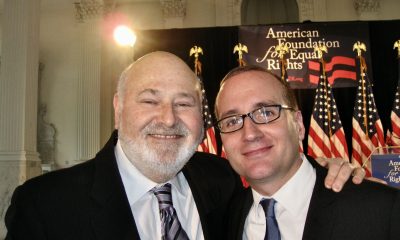
 COMMENTARY2 days ago
COMMENTARY2 days agoWhy Rob Reiner’s murder hit this old lesbian hippie so hard
-

 a&e features2 days ago
a&e features2 days agoIndya Moore on history-making Gotham Award nomination and speaking out on social media: “It has complicated my access to work”
-

 Movies21 hours ago
Movies21 hours agoLong-awaited ‘Pillion’ surpasses the sexy buzz
